WATCHMAKER COMPARES OMEGA SEAMASTER TIMEPIECES WITH CALIBER 1120, 2500, & 8500 MOVEMENTS
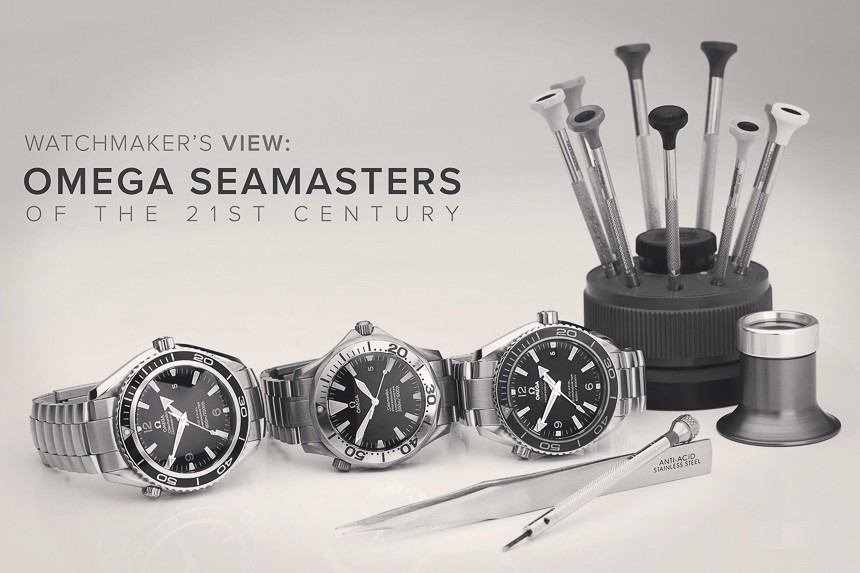
As an aBlogtoWatch guest, Hugh Taylor from Xupes.com (a pre-owned watches and luxury goods dealer in the UK) once again interviews their in-house master watchmaker, Mickey Nolan, as he proceeds to explain and dissemble three different movements that have all found homes within Omega Seamaster watches. Like many timepieces which have been produced for a number of years, the movements inside those watches evolve and change. Here, we go inside of the Omega caliber 1120, 2500, and 8500 movements to understand what they are about, how Co-Axial escapements matter, and what Mickey the watchmaker has to say about them.
Several Fridays ago, while Twitter accounts across South East England ticked away with trademark Anglian wisecracks about how an unheard-of-in-these-parts 4.2-magnitude earthquake had toppled an alarming number of wheelie bins — “We will rebuild!” — Owen (the photo wizard) and I nestled into Mickey’s watchmaking workshop.
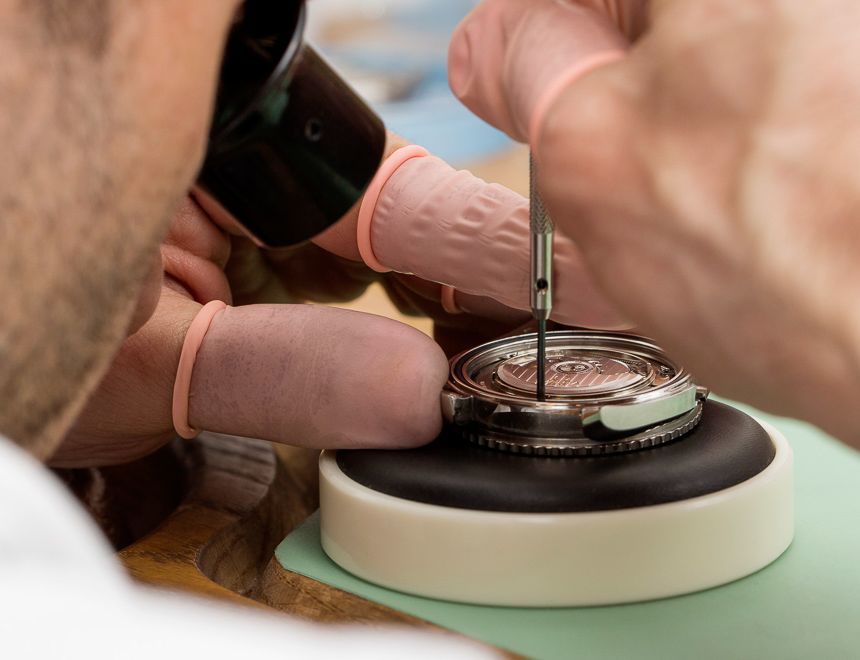
We were at Xupes HQ in a peaceful town on the fringe of the northern backwoods of London. This was our second session with Mickey, and we weren’t back just for a chinwag. Last time around he’d mentioned the Omega movements when mulling over the Rolex 3135. Well, we wanted to dig a little deeper this time, so we took three textbook Omegas with us — three generations of Seamasters: one of the old standard sort with a calibre 1120; an early Planet Ocean with a 2500 co-axial; and a latest generation in-house one with an 8500 co-axial. These are the Omega Seamaster references 2231.50.00, 2200.51.00, and 232.30.42.21.01.003 watches.
We were after his view on the evolution of the Omega movement since the turn of the millennium. We wanted to see with our own non-horologist eyes what the fabled co-axial calibre is all about, and try to figure out if it’s as game-changing as the Omega tribe preaches. We had a time window of just under two hours to strip them down and put them under the crosshairs. No plain sailing given the differences between the movements, not to mention the time it takes to pull them apart. But having served three and a half years with Omega’s Regent Street watchmaking team, Mickey was the right fit for the gig.
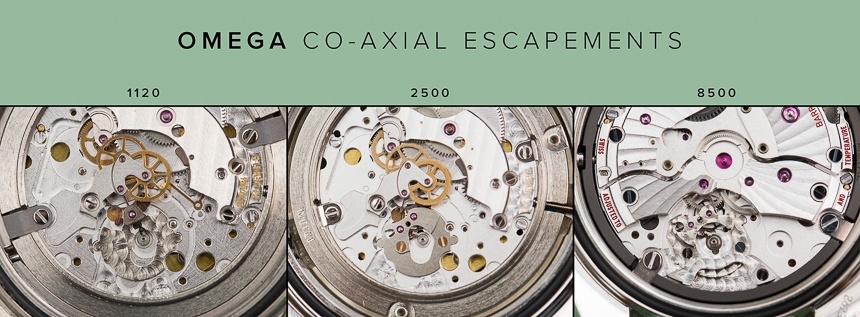
Hugh Taylor: Hello Mickey. I suppose we’d better kick off by asking you what you are wearing on your wrist today?
Mickey Nolan: What I'm wearing today is a Patek Philippe Aquanaut.
Hugh Taylor: Nice. Do you not own any Omegas?
Mickey Nolan: Yeah, I’ve got a Speedmaster Moonwatch, with a Calibre 861, manual wind. Nice movement.
Hugh Taylor: Good of you to strap it on for today.
Mickey Nolan: Haha yeah! I totally forgot. I was rushing this morning.
Hugh Taylor: Fair enough. Last time we met, when showing me how the Rolex 3135 movement worked, you suggested it would be a great idea to move onto an Omega next. Why’s that?
Mickey Nolan: Well, the 3135 is one of the best movements out there, as far as mass-produced quality movements are concerned. I mean, sure, high-end players like Patek Philippe and A. Lange & Söhne might be hand-finishing their movements and making them more complicated, but those watches are works of art, and they have the hefty price tags to go with them.
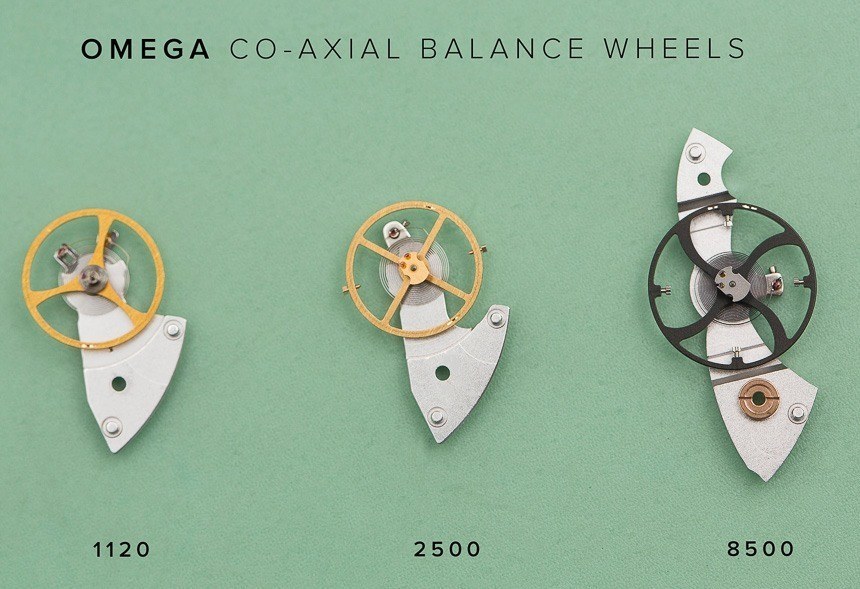
A Rolex is highly impressive, and it’s a real tough customer: it is not aiming at the same market as those brands. In the Rolex market, i.e. the popular mechanical watch market, it will forever be one of the all-time greats. Then, in my opinion, another fantastic contender would have to be Omega. Omega is clearly trying to go head to head with Rolex, and to be fair to them, they’ve had a pretty good crack at it. Introducing the co-axial in 1999 was clearly them making a play for top spot. So I guess it seemed like a logical follow-on.
Hugh Taylor: Right. So, today, you’re going to show us what a co-axial is and whether it or the 3135 is better?
Mickey Nolan: Not really. I mean, I’ll compare the Omega 1120 with the 3135 because they’re both a similar set up. But the co-axials are completely different, so we’ll take a look at those, and how they’ve improved, or not, and where I can I’ll give you my opinion.
Hugh Taylor: What do you mean by a similar set up?
Mickey Nolan: Well, they’re both Swiss lever escapements. I showed you the Swiss lever escapement in the 3135. If you remember, that’s the bit that transfers the energy from the mainspring (the powerhouse of the movement) to the swinging wheel or balance wheel. The balance is the part that controls the rhythm of the beats; it stops the gear train spinning too fast or slow.
The escapement is a smart little piece of kit; we’ll take a look at it in a minute. Basically, it’s a spinning wheel with little club-shaped teeth that are designed in a way that they drive a fork, back and forth. Each time the fork is moved, the other end of it, or the handle, if you like, gives a little push to the balance wheel. This keeps the balance wheel moving. The contact between the teeth and the pallet is what makes the ticking sound in a watch. This contact is one of the areas where the movement spends a decent amount of energy. In the classic Swiss lever set up, the teeth slide along the prongs of the pallet, which causes friction or resistance; in the co-axial, though, the teeth just push the tips of the prongs, so there’s much less friction.
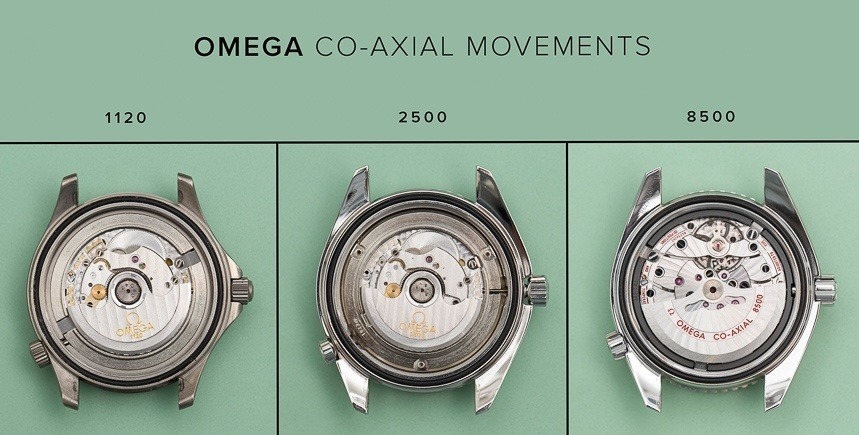
Hugh Taylor: That sounds logical. So, does it work then?
Mickey Nolan: The co-axial idea was rejected by loads of brands, probably Rolex too. I mean, it’s got some logic in it, yeah, and it promises to do away with oiling, which would be a dream for watchmakers. But the lever escapement has been around for 250 years for a reason. I mean, it’s simple and it works well.
I think Omega just wanted to set themselves apart, so they jumped at the chance of having an advantage. The co-axial took a shedload of work to fit in. Was it worth it? Well, it’s excellent, don’t get me wrong, and it’s different, but whether it’s better or not, we’ll have to let you decide. I mean, I suppose, what they have done is taken themselves from being a fixed second best to people not knowing what’s better. I guess, maybe it was a good call then.
Other high-end brands have tweaked their escapements to reduce the friction too, like Audemars Piguet, for example. Then there’s Breguet, who use a different setup altogether. And more recently Girard Perregaux’s Constant Force. So it was brave of Omega to have a go.
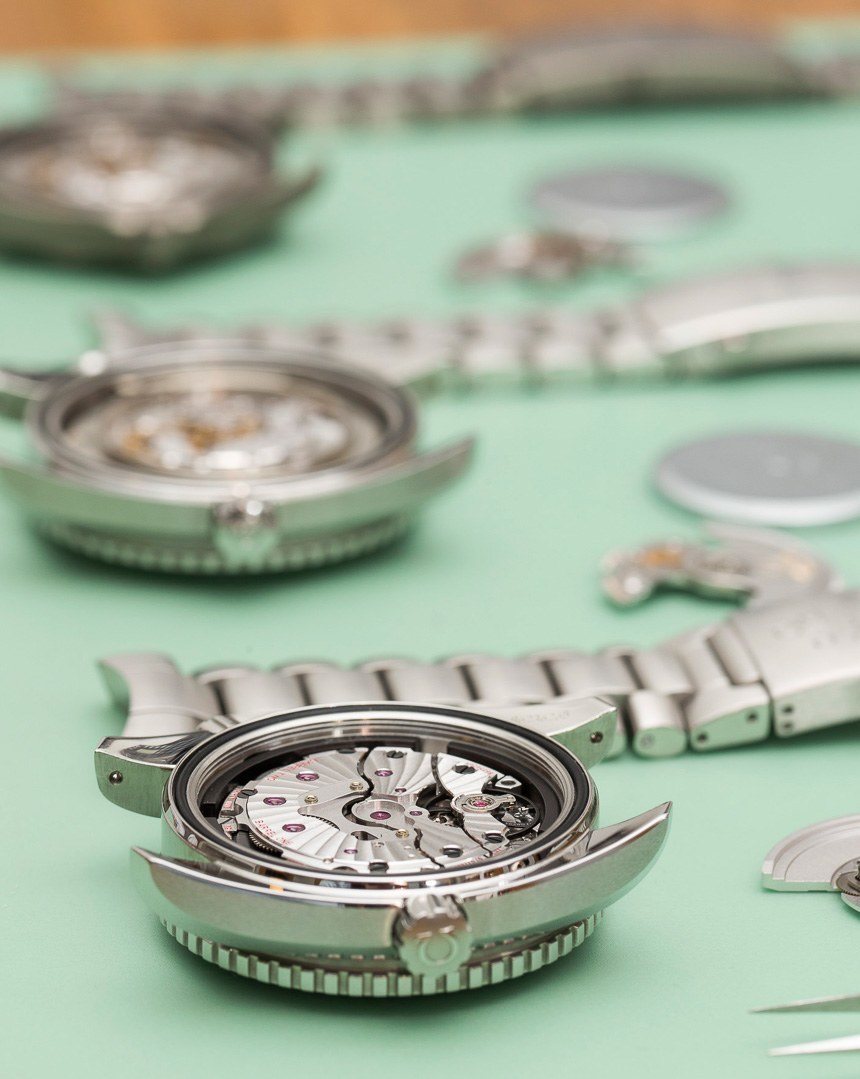
Hugh Taylor: OK, great. So can you start off by comparing the 1120 and the 3135 as you suggested?
Mickey Nolan: Sure. The 1120 is a modified ETA movement. It’s used by a bunch of top brands like Tag Heuer or even IWC. Omega just swapped out a couple of bits and finished it in their style.
It’s a close call between the 1120 and the 3135. I mean, they produce similar results as far as performance is concerned, and you’re probably not going to notice much difference. Under the microscope, there are a couple of small differences that set the 3135 apart: like the Microstella screw system, which is a more accurate and efficient way of adjusting the balance than the Omega version; and there’s the free-sprung balance in the 3135 which is definitely more efficient. Again, if you remember, it’s trickier to make, but it’s not restricted like standard movements — it’s used by loads of high-end brands. Actually, Omega upgraded to the free-sprung balance for the 2500.
There are loads of other minor differences as well, of course, but other than those, we’re just splitting hairs, really. I’d happily own either.
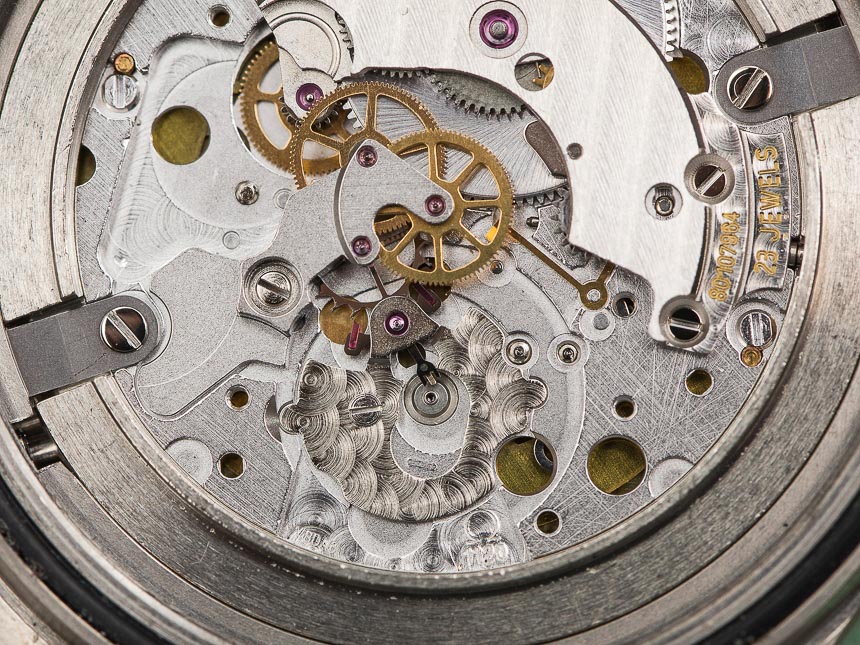
Hugh Taylor: And how does the finishing stand up?
Mickey Nolan: Yeah, the Omegas look smart. I’d say they’re pretty much on the same level as Rolex.
Hugh Taylor: So, from being hot on Rolex’s heels, Omega decided to do something radical for the 2500. How did it work out?
Mickey Nolan: Yeah it was a smart move, but it took a lot to get it all together. It took 6 to 10 years to work the co-axial into the 1120, because the co-axial escapement requires considerably more space. But it worked out OK after a few upgrades although, again, the difference in performance is minimal because we are already talking about high-performance movements.
The main problem for Omega was trying to convince people of the benefits of the co-axial because it involves sitting them through an engineering lesson. Not a big seller, you know. So, eventually, they just bumped up the warranty from the standard two years to three years, and the newer ones are four years. It’s like a kind of proof. But then, they also dropped the beats per hour down in the 2500, so that could explain the longer service interval.
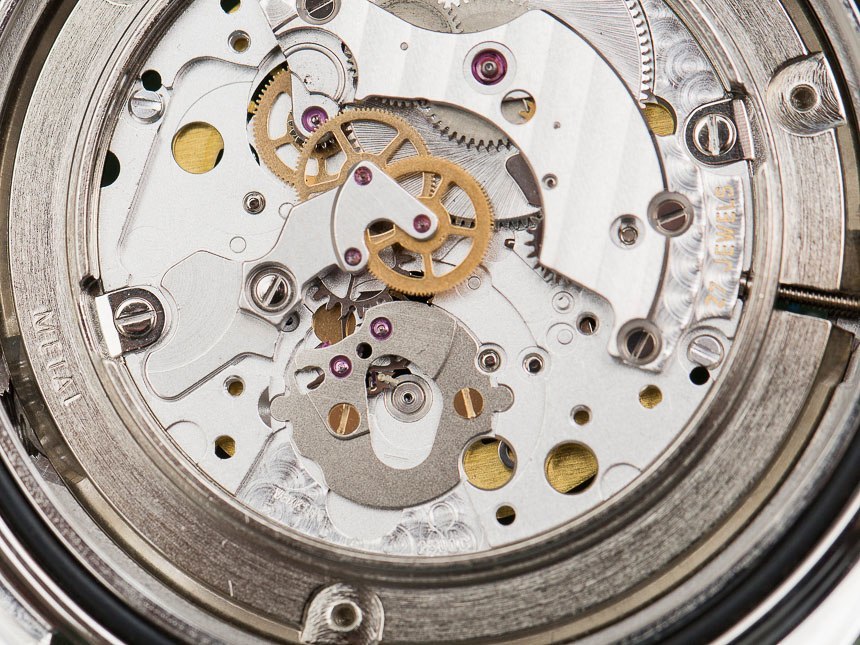
Hugh Taylor: Why’s that?
Mickey Nolan: They dropped the beats per hour down from 28,800 to 25,200. 28,800 is a pretty common rate for most watches, so it was a bit surprising when they dropped it down. The co-axial escapement can afford to beat at a lower frequency because of its design. But in a Swiss lever, a lower beat per hour is associated with less accuracy. It’s on a microscopic scale, obviously, but the seconds hand might be a fraction more jumpy. Take the Zenith El Primero movement that’s so popular, it beats at 36,000. Sure, it’s not guaranteed that more beats means better movements but, generally, it’s what most brands seem to be shooting for.
Anyway, one’s thing is sure, less beats means less wear on parts. So, if you knock a few thousands beats per hour off your total, you might not need to service it as often. I’m not saying that Omega are compensating because the co-axial theory doesn’t work, but it’s clearly difficult to get it spot on, and you’re not going to notice much difference, you know. So, yeah, maybe they played it safe. Maybe they dropped it down to make more of a difference on service times. The newer 8500 still runs at the lower 25,200 too.
Hugh Taylor: So are they noticeably less accurate?
Mickey Nolan: No, not at all. If it’s been serviced right, then you could get a variance of, say, two seconds per day. They still pass the COSC tests without any problems – COSC standard is from -4 to +6 seconds per day. That range is a bit too wide and so we always fine-tune it a lot better than that.
Hugh Taylor: OK, and what about the 8500, is that a step up then?
Mickey Nolan: It’s got a fair bit going for it, yeah. They went through a bit of progression to get to the 8500. They had A, B, C, and D versions of the 2500. Again, they’re all fine, but they were tweaking little bits to get the co-axial working in harmony. In the D version, the escapement is similar to the 8500.
The 8500 is almost completely an in-house movement. Some parts come from other companies like ETA, but all the companies are under the Swatch Group umbrella. The 8500 costs more, but it has some good improvements.
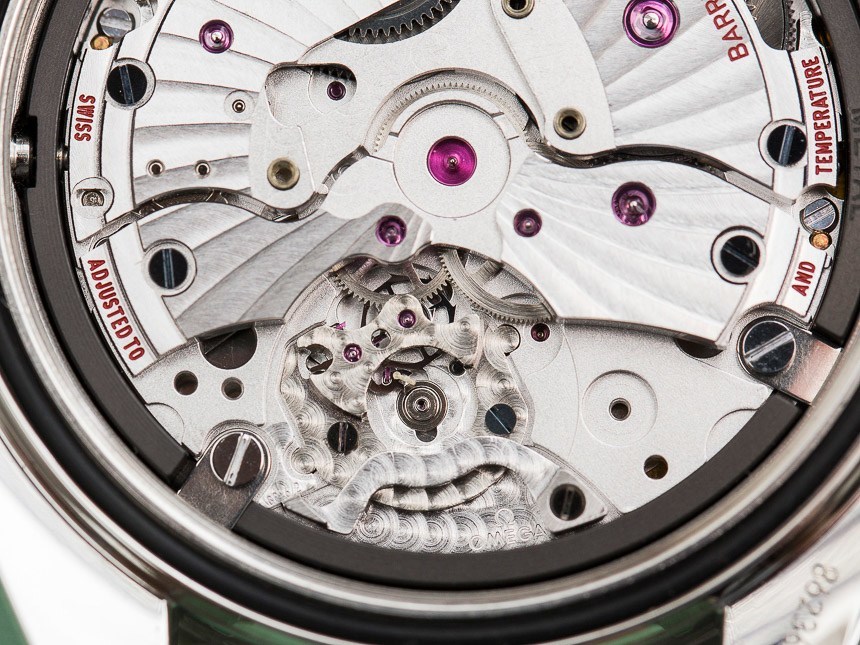
Hugh Taylor: Such as?
Mickey Nolan: It is a new movement and they put some time into the finishing as well – which is probably why they went and put a display back on it. A big tweak was the new rotor; it harnesses energy in both directions so it winds faster and doesn’t need to be wound as often. It’s nearly silent too. Some parts are made of silicon as well, like the hairspring and the balance, which means they can’t get magnetised and they work with less friction, hence allowing for the use of even less lubricants in the escapement (more on that in a bit).
This time, they designed the 8500 around the escapement, as opposed to the escapement being designed to fit the movement. So they could afford to make it (the escapement) larger and add a couple of extra bits. The movement is bigger now too, so the watch sits a bit chunkier on the wrist.
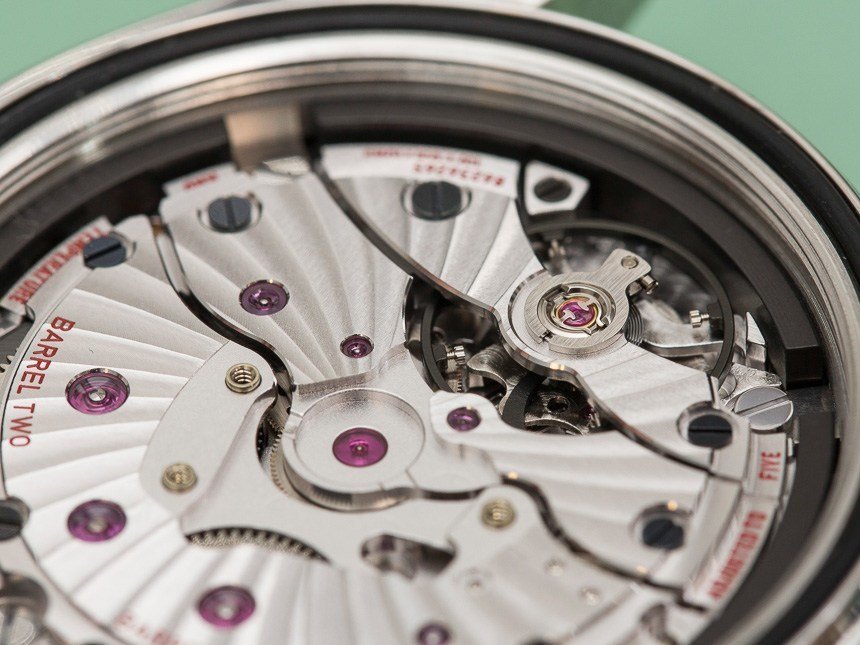
Furthermore, the escapement now takes its energy from two mainsprings instead of one, so it’s got a longer, 60 hour power reserve – even longer than a lot of Rolexes, actually. Then there are the barrel arbors that are DLC (diamond-like carbon) coated. I think, at one point, Omega had called some of their watches back because the arbors were wearing out, but now, they’re damage resistant. Oh, and last but not least, the balance bridge now has two arms like the Rolex 3135.
There are loads of smaller improvements, too, that you don’t really notice, like the jewels being made from a new material that has less friction.
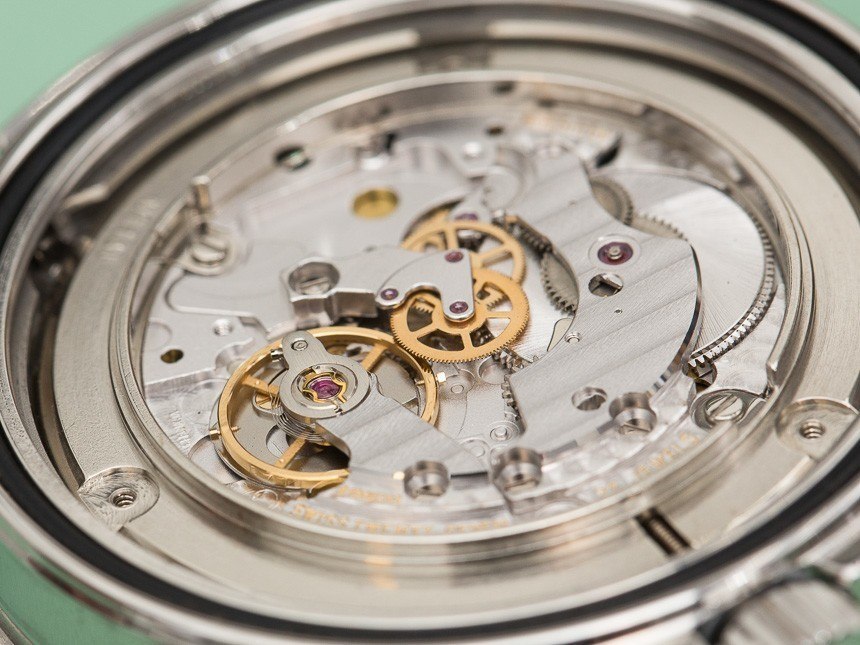
Hugh Taylor: So it sounds like it’s a good upgrade then. And how are the different watches to work on?
Mickey Nolan: Yeah, it is, but the others are still good watches too. I like the 1120 as it is a good movement and the Swiss lever escapements are easier to deal with. A lot easier.
(Mickey is removing the escapement of the 8500.)
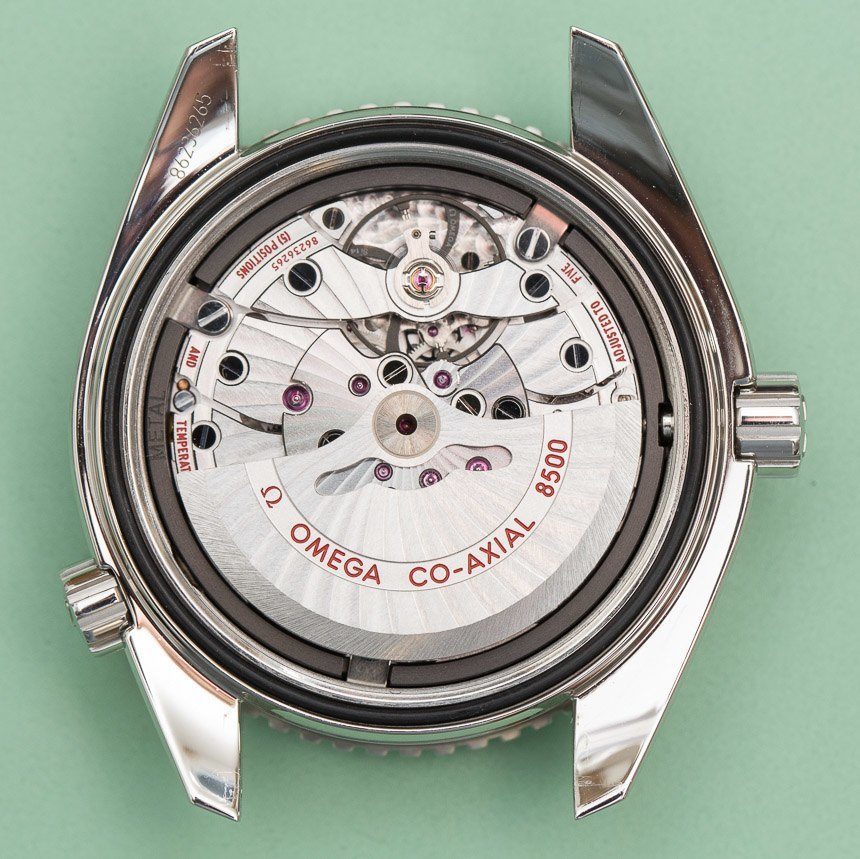
I think the co-axial is a lot more sensitive. Omega use oil on it George Daniels (inventor of the co-axial) didn’t. And it’s a microscopic amount, I mean you actually have to use a microscope. If it’s not correctly oiled, you won’t get your four years out of it. The amount of oil we’re using is so minute that it makes the application a rather difficult job. If you use too much oil, it’s going to stop the watch, or it’s going to run off the back of the teeth and stop the watch. If you put too little oil, it is going to result in stoppage as well. It has to be perfect, and it has to be on a certain spot on the teeth too: right in the middle. There’s a lot more to it than the conventional Swiss lever
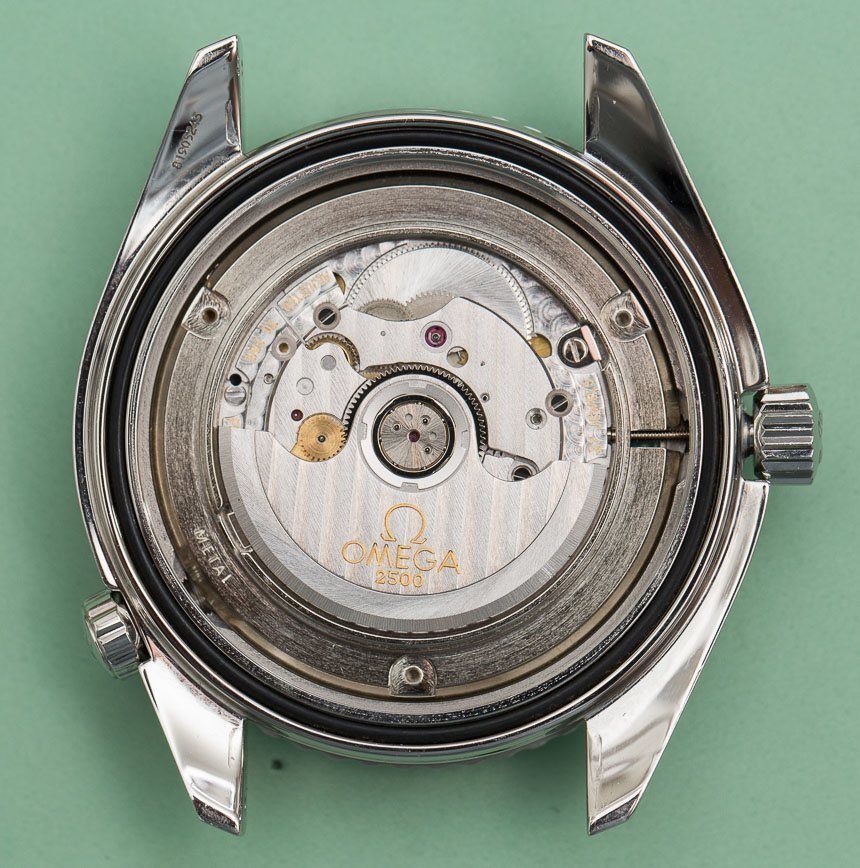
The other thing about co-axial escapements: taking the balance out is a nightmare! You can’t just pull it out. If someone doesn’t know what they’re doing, it's – phew! – you know, it’s not like a conventional one, they’re never getting it in again. Even if you do everything right, putting it back in is tricky as well: you have to get the impulse pin into the fork and lever, and then you have to twist the movement.
The first time I did it, it took me about and hour and a half just to put it in. You’re trying to get the hairspring and the balance in, you have to twist it around and then get it into the right place. The Swiss lever just slots in.
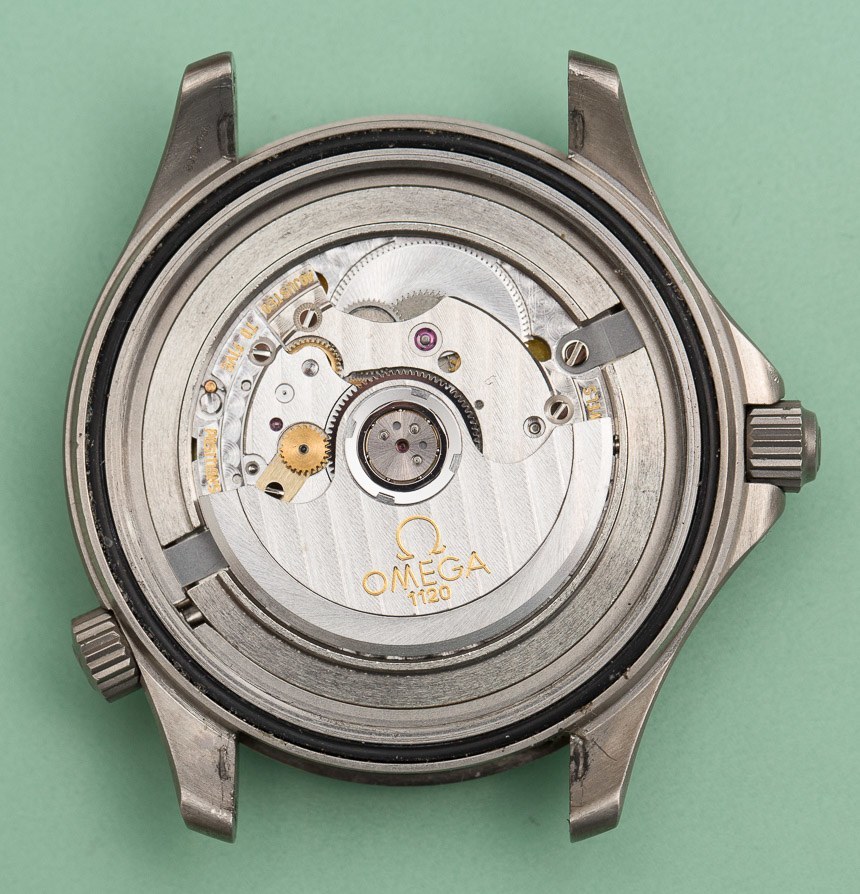
The good thing about the co-axial now is that the hairspring cannot be tweaked to get it concentric or flat, which is great for us watchmakers because we don’t have to mess around with it. We’re also not allowed to change the lift in the lever, something we can do in the Swiss lever escapement — bring them up by a couple hundredths of a millimetre. Each lift will reduce or increase the amplitude. But there’s too much going on with these, there’s three different lifts and it’s too difficult, we have to just change the lever and the escape wheel if needs be — sometimes, the lever isn’t correct. It’s expensive, but the customer isn’t going to take the hit (financial). If the distance between the tooth of the escape wheel and the lift of the lever is either too great or too little, we just change it, as per what Omega recommends.
Hugh Taylor: Right, we have established that working on a Co-Axial is more complicated. What are the common issues you see with any of these three watches?
Mickey Nolan: Well, when you take the automatic off the 1120 and the 2500, because the winding wheels are constantly working, the oil congeals and it gets quite dirty. If that drips down into the escapement it’s going to need a service. This is one of the main sources of issues with these movements. The automatic sits very close over the escapement. This is one of the first things I look at. The 8500 has only been out for a few years, so we still haven’t had many back in for servicing, although they’re starting to come in now.
– End of interview –
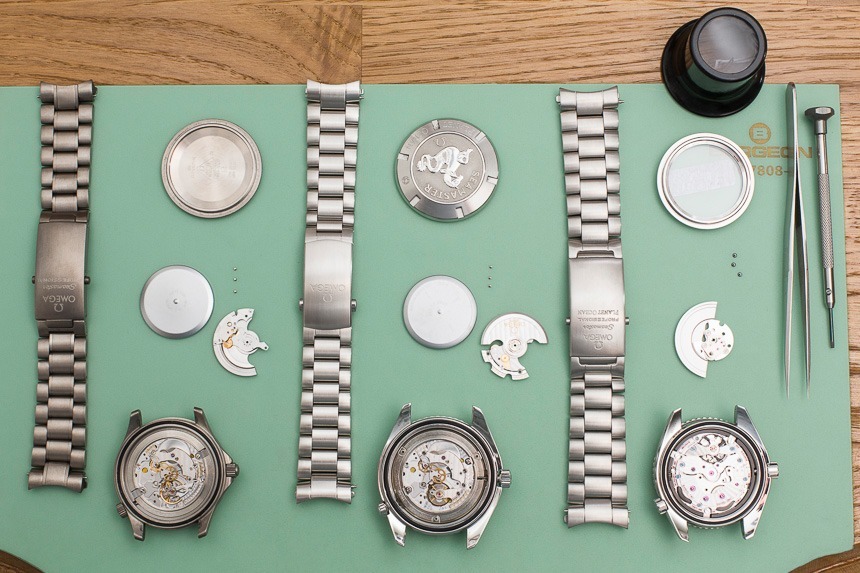
By this point, it was well gone seven on a Friday evening. For us, with an eye and a half on the weekend, the last light enthusiasm for discussing watches had flickered out. But I left for home chewing over memories of our session, trying to work out my conclusions. As far as I could see, there was no real winner between the watches I had been looking at today and the Rolex we did a few weeks back. My gut said Mickey felt the same.
When I went over my notes a couple of days later, the first question I’d asked Mickey rang in my mind. Yeah, I was joking, but maybe asking him what he was wearing was actually the crux for me. Do we really need expensive functional mechanical watches these days? Surely, it’s either a work of art or it’s digital? Yeah, I’d definitely buy either; these are top pieces of kit, the result of decades of ferocious inter-brand engineering warfare. But I might save my pennies for a hand-made one... Perhaps I’ll ask Mickey to open one up first.
Written by Hugh Taylor, editor of Xupes Magazine; photography by Owen Davies, Xupes.
πηγή: https://www.ablogtowatch.com/watchmaker ... movements/" onclick="window.open(this.href);return false;


